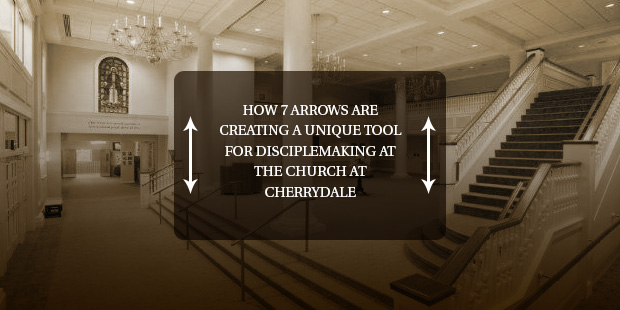
3 Pace-Setting Tools for Lead Pastors
I’m often asked, “Is there any single common denominator that you can find in every growing church?” I have studied churches for many years, read about them, and visited them. I’ve discovered that God uses all kinds of churches, in all kinds of different ways, with all different methods and styles. But there is one common denominator that you can find in every growing church regardless of denomination, regardless of nationality, and regardless of size.
That common denominator is leadership that is not afraid to believe God. It’s the faith factor.
Nothing starts happening until somebody starts dreaming. Every accomplishment started off first as an idea in somebody’s mind. It started off as a dream. It started off as a vision, a goal. If you don’t have a goal for your church, your default goal is to remain the same. If you aim at nothing, you’re definitely going to hit it.
A church without a vision is never going to grow, and a church’s vision will never be larger than the vision of its pastor. So you as a leader and as a pastor must have God’s vision for your church. The very first task of leadership is to set the vision for the organization. If you don’t set the vision, you’re not the leader. Whoever is establishing the vision in your church is the leader of that particular church. A church will never outgrow its vision and the vision of a church will never outgrow the vision of the pastor.
If I’m smart I can always compensate for my weaknesses. I can always hire people to do things or delegate to volunteers the things that I can’t do. If I’m not good at counseling, I can find people who are good at counseling. If I’m not good at administration and details, I can find people to handle administration and details. But there is one thing I cannot delegate. I cannot ask other people to believe God for me. I have to set the pace in terms of vision, in terms of dreams, in terms of faith, in terms of what God wants to do in our lives and in our congregation. You cannot delegate faith in God.
The Bible tells us in Proverbs 11:27a, “If your goals are good, you will be respected” (GNT).
So I want to challenge you to dream great dreams for God. One nice thing about dreaming is that it doesn’t cost anything. You can have great dreams and think through and pray through and it doesn’t cost you anything at all. The Bible says, “God . . . is able to do far more than we would ever dare to ask or even dream of — infinitely beyond our highest prayers, desires, thoughts, or hopes” (Ephesians 3:20 TLB). God comes along and says, “Think up the biggest thing you think I can do in your life, in your ministry, in your church — and I can top that. I can beat it.”
So you need to ask yourself this question, “What would I attempt for God if I knew I couldn’t fail?” Let that expand your horizons. Let it expand your dreams. Expand your vision. It starts with a dream.
There are three parts to getting God’s vision for your ministry.
The first thing God shows you is the What? He shows you what he’s going to do. The big mistake we make once we have a sense of what God wants to do is trying to accomplish it on our own. Inevitably we fall flat on our faces and come crawling back to God saying, “Oh, God. I’m so sorry. What did I do? Did I miss the vision? You told me what you were going to do, and I went out and tried to accomplish it and fell flat on my face. Did I miss the vision?”
And God will say to you, “No, you didn’t. You just didn’t wait for part two. I told you what I was going to do, but you didn’t wait to find out How I was going to do it.” When God shows you how, it always seems to be the opposite way that you thought. And once you see the What and the How you’re still not finished. There’s a third part of the vision.
God shows you When. The longer that I’m alive and the longer I walk with the Lord and the longer I’m in ministry, the more I’m convinced that God’s timing is perfect. He is never a minute early, he is never a minute late, he is always right on time. These are the three parts to getting God’s vision: What, How, and When. And you must wait for all three parts for God to work in your life.
When I started Saddleback Church, I didn’t envision the enormous campus and the big building we now have. In fact, I’m not a very visual thinker. Some people can see it. They’re like artists, and they can visualize the church buildings when they’re all finished, and they can see exactly what it’s going to look like in their mind. I’ve never been that kind of person. I have what I call Polaroid vision. Have you ever taken a Polaroid picture? You take it and the longer you look at it the clearer it gets. That’s true in my life. When I first started Saddleback, I didn’t know what it was going to end up like. All I knew was that God had called me to this spot and I had a bunch of ideas in a bag and I wanted to build it on the five purposes of God. As I have walked with the Lord and worked with the Lord over the years, the vision has gotten clearer and clearer.
You get God’s vision by saying, “What do you want me to do? How do you want me to do it? And when do you want me to do it?” You need to stop praying, “God, bless what I’m doing.” And instead start praying, “God, help me to do what you want to bless.” I get up in the morning and I pray a very similar prayer every day. “God, I know you’re going to do some very exciting things in the world today. Would you give me the privilege of just being in on some of them? I just want to be in on what you’re doing. I want to do what you’re blessing.”
God uses the person who has a dream.
Want to learn more about discovering your God Dream? Connect with an Auxano navigator today.

Tags: Rick Warren, Tools, Vision, dream





















